There are many different variations of advice given when dealing with Plantar Fasciitis. Whilst most of the advice provided will eventually allow you to recover, not all of the advice given will allow the recovery to be as quick as it could be.
How can I recover quickly from Plantar Fasciitis? These 5 steps will give you the best chance of a quicker recovery, and reduce the likelyhood of your Plantar Fasciitis from returning.
- Breaking the cycle of continual re-injury
- Rest, Foot Stretching Exercises and Massage
- Addressing the underlying causes
- Investing in Appropriate Footwear
- Taking Preventative Measures
We will now address each point in greater detail to allow you to fully understand what action is required to get you back on your feet and pain free.
1. Breaking the Cycle of Continual Re-Injury
This has to be the most important part of the recovery process, and is the most often overlooked. Much of the advice given on other resources will see you start with the item listed as number 2 from our list, rest, exercise and massage. Whilst this is an important step in the plantar fasciitis healing process, if you do not prevent yourself from re-injury, the road to recovery will be a long one.
How does the Re-Injury Occur?
As you are likely to be aware if you have done any research on the condition, Plantar Fasciitis is where the plantar fascia running along the base of your foot becomes damaged with tiny little tears, which then become inflamed.
When you rest your foot, the plantar fascia begins to repair itself and those small tears begin to heal. However, there is not sufficient time for it to heal fully before you need to stand up once again.
As you stand and place weight on your foot, those part healed tears open up again. It is that re-tearing of the plantar fascia that gives you the sharp intense pain that you associate with Plantar Fasciitis.
It is that constant cycle of part healing and re-injury that makes the healing process of many plantar fasciitis sufferers such a long drawn out affair.
But I Thought Exercise Was Good?
As mentioned earlier, the problem with starting out on step 2 of the 5 step program, is that you don’t prepare your foot prior to beginning the exercise routines.
Many of the exercise techniques given for Plantar Fasciitis recovery advise you to do them in the morning when you first awaken after a nights rest. They also usually involve you to placing your foot against a wall or a step.
This is where the problem occurs.
The main cause of re-injury is when you get out of bed to walk to the wall or stairs to do your exercises. As you get out of bed and stand, you put your full weight onto your foot for the first time, causing the plantar fascia to stretch and absorb the added weight. It is this stretching of the plantar fascia that causes the part healed tears to re-open, causing considerable pain and setting your recovery back to square one.
So How Do I Break The Re-Injury Cycle?
To prevent re-injury each morning, it is important that the plantar fascia is fully stretched prior to standing and adding your weight. There are several ways that you can stretch the plantar facia prior to standing such as wearing a night splint, a foot massage, or in bed stretching exercises.
Important: Walking barefoot increases the strain on the plantar fascia ligament and should be kept to a minimum whilst you are in the recovery process. Once you have stretched the plantar fascia and you are ready to stand up from your bed, have a supportive pair of shoes or orthotic slippers to put on prior to standing.
Related Article: Breaking The Continuous Pain Cycle of Plantar Fasciitis

2. Rest, Foot Stretching Exercises & Massage
Much of the plantar fasciitis healing process is purely following a routine of resting and plantar fascia stretching. This allows your body the time to heal itself, whilst gently strengthening the damaged ligament to allow full and pain free functionality.
Rest
Resting your foot to allow the plantar fascia sufficient time to heal itself is probably the number one thing you can do to promote a speedy recovery.
The less time you spend adding weight to your foot, the less chance you have of re-injury. This in turn will allow the existing tears in your plantar fascia to heal much quicker, and when combined with correctly applied stretching techniques, you should be back up to full strength much more quickly than someone who does not take the time to allow healing to take place.
Foot Stretching Exercises
Whilst you are resting, the little tears in the plantar fascia are closing up and healing themselves. You want to do everything you can to prevent those tears from opening up agai, however you also want to promote stregthening of the plantar fascia ligament.
As established earlier in this article, it is imperitive that you gently stretch the plantar fascia prioer to standing up and adding your body weight to your foot. This cannot be stressed enough and is why I have made the point several times. If you are to recover quickly from your planatr fasciitis, you must do everything you can to prevent further damage or repeat damage to the plantar fascia.
Here are a couple of exercise you can do prior to getting up from your bed or chair, to gently stretch the plantar fascia.
Massage
Massage is another way to stretch the plantar fascia without adding to much stress and risking re-injury.
Here is a massage video.
3. Addressing The Underlying Cause of your Plantar Fasciitis
If you are to truly be rid of your Plantar Fasciitis, then you must take steps to find out the underlying cause of your condition. There are many reasons why a person may develope Plantar Fasciitis and we will discuss some of the main ones here. If you find that your cause is listed below, then you will need to take the necessary measures to fix the problem. By eliminating the cause, you will aid your recovery, and reduce the possibility of the condition returning.

Overweight
Being overweight is a common cause of Plantar Fasciitis. The plantar fascia acts as a kind of shock absorber in the bottom of your foot, allowing your body weight to be distributed along the length of the foot. When you are overweight, the plantar fascia is having to work much harder, and the added stress it endures due to the extra weight, can cause it to become more easily damaged.

Worn or ill fitting shoes
Wearing shoes that do not fit correctly, or have become worn over time , can contribute to the cause of Plantar Fasciitis. It is essential that the footwear you have, provides decent support so that the plantar fascia does not have to work so hard. If you have shoes that you like, but that do not offer much support, there are orthotic products available, such as insoles and arch supports. These orthotics are a cost effective way of giving your shoes the correct support required to aid recovery and prevent further injury.

Working Environment
People who work in jobs that see them walking or standing for long periods of time are at a higher risk of getting Plantar Fasciitis. Also standing for long periods of time on hard surfaces such as concrete floors can be a contributing factor. Nurses, factory workers, bar staff, waitresses etc are all professions that invlove standing and walking for long periods.

Sports & Athletics
People who run, jog and take part in sports or athletics that put additional stress on their feet are at higher risk. Athletes such as basketball player, gymnasts and jumpers, all put added pressure on their plantar fascia when doing theor high impact sports. Runners that do not change their running shoes oftern enough will also be at risk due to the lack of support theoir old shoes will offer.

Age
As we get older, the elasticity in the plantar fascia decreases and puts us at a higher risk of causing damage. The highest age group seems to be 40 – 65, and it appears to be more common in women. Younger woman who are pregnant are also at risk due to the added weight and possible unnatural gait when walking.
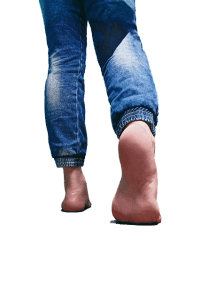
Foot Issues
People who are flat footed, high arched or those who have an over/under pronation problems may find themselves suffering from plantar fasciitis. People who fall into this category could use some kind of orthotics to help reduce the risks. Also, spending a lot of time barefoot, in flip flops or high heeled shoes can add to the chances of damaging the plantar fascia.
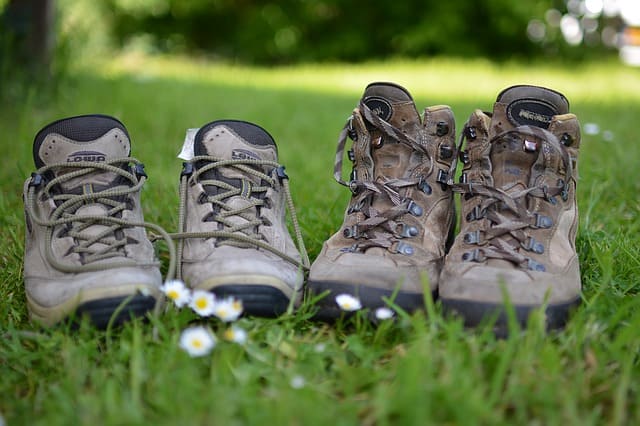
4. Investing In Appropriate footwear
One of the best investments you can make is buying correct fitting supportive shoes. When you think about how much time we spend on our feet in a typical day, especially if your job calls for you to be on your feet all day, it makes sense to think about the type of shoes we should wear.
So many time people will wrongly buy the cheapest pair of shoes they can think they can get away with using. These cheap shoes are a false economy as not only do they contribute towards foot problems such as plantar fasciitis due to the lack of support, but they also tend to wear out very quickly.
If we could forsee that those $25 shoes were going to cause us to have foot issues that would require spending $100’s of dollars in orthotic aids, consultations with a medical professionals and countless hours of pain, we would probably gladly pay the extra $50 to get a more suitable pair of shoes.
I cannot stress highly enough that it is better to have one or two pairs of well made supportive shoes that may cost $100 – $150 each, than it is to own 10 pairs of $20 cheap unsupportive pairs.
Also, if you are already suffering with plantar fasciitis, (which I assume that is why you are here), your recovery rate is going to be soooo much slower with a cheap pair of shoes. Also your problems are going to be ongoing, as mentioned in the underlying issues above regarding worn or unsupportive shoes.
If you take nothing else away from this article, please let it be the fact that your feet do a hard days work, day in and day out and the least we owe them is to be supported with a decent pair of shoes.
I can assure you that once you have invested in a really comfortable pair of shoes, you will never consider the cheaper options again, and your foot health will be all the better for it.
Amazon have a wide selection of footwear designed for plantar fasciitis sufferers. Read some of the many 5 star reviews from convets to see just what a difference a good pair of shoes really makes. View their selection here.
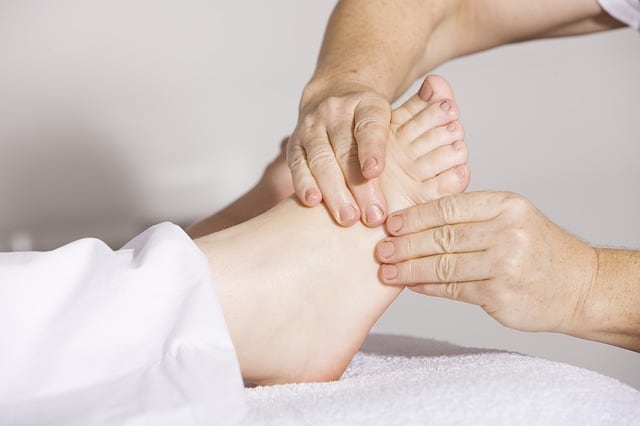
5. Take Preventative Measures
Once you have managed to rid yourself of your Plantar Fasciitis condition, you will want o ensure that you don’t get it again.
If you have read through this whole article, you should now be aware of what you should, and more importantly, shouldn’t be doing if you want to prevent having plantar fasciitis again.
Plantar Fasciitis is all about risk management and by implementing changes to any of the issues listed above, you will drastically reduce your chances of becoming a sufferer again in the future. Although there are no guarantees that you will not get the condition again, by being aware of the problem areas within your life, and making the changes to the areas that are within your control, you stand a fighting chance of coming out on top.



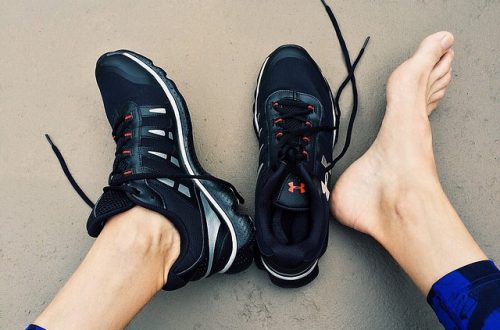
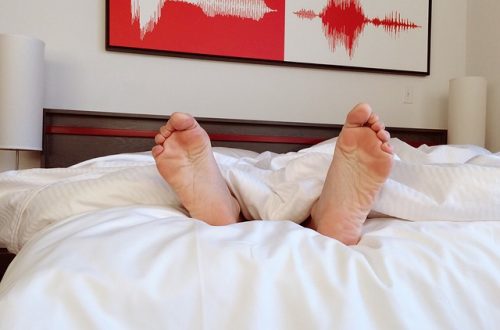
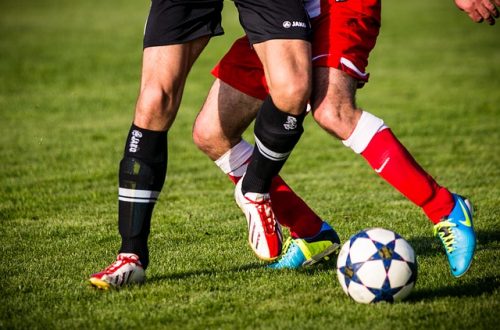
4 Comments
Pingback:
Pingback:
Pingback:
Pingback: